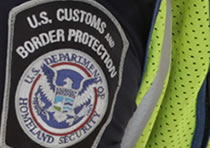Product Safety Agency Seeks To Advance Mission Through Center
Thursday May 15, 2014 - U.S. Customs and Border Protection (CBP) and U.S. Consumer Product Safety Commission (CPSC) met at the National Product Safety Research Laboratory in Rockville, Maryland for a full-day workshop to discuss joint efforts to address trade enforcement and facilitation through the Consumer Product & Mass Merchandising (CPMM) Center of Excellence and Expertise.
“The Centers have transformed how CBP approaches its trade mission,” said CPMM Center Director Petrina Evans. “It’s critical that federal regulatory agencies, such as CPSC, continue to engage with CBP at the industry level.”
The products regulated by the CPSC are primarily divided among three industry focused centers: Consumer Products & Mass Merchandising (Atlanta), Apparel, Footwear and Textiles (San Francisco) and Electronics (Los Angeles).
The key consumer products of concern for CPSC are those that could cause injury or death to consumers, especially children. These risks include excessive amounts of lead in paint, banned phthalates or small parts which could cause a choking hazard.
The CPSC has placed investigators at select ports across the country for import surveillance. In addition, CPSC has made major investments into the Commercial Targeting and Analysis Center (CTAC) – a multiagency fusion center in Washington, DC – by assigning three CPSC international trade specialists to oversee their national enforcement efforts.
“The Commission has committed to a risk assessment methodology; one that deploys advanced technologies, local and national resources, and a close working partnership with CBP,” said CPSC Import surveillance Director Cave. “By working through the Center, we’ll be able to better accomplish our import safety mission, by leveraging the collective resources to improve trade facilitation and enforcement within the consumer product industry.”
For more information on the CPMM Center, click here.
 Official website of the Department of Homeland Security
Official website of the Department of Homeland Security






















